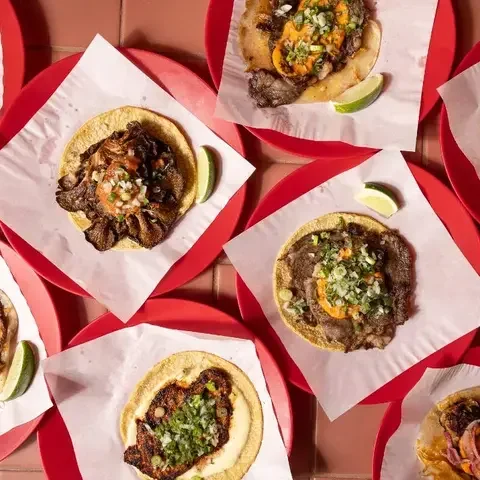Grilling crustaceans is also a good way to taste the heads with subtle smoky notes, especially if we’re talking about head-on prawns: they have a slightly thicker shell than shrimp, offering a ‘shield’ to protect the juices from overcooking. The difficulty is finding different cooking points for the tail and head – or at least cooking them more uniformly. Usually, as the meat of these animals is delicate, it requires less time on the heat, which means that head corals and tomalley are often served raw.
Lobster is even trickier because the tail is smaller, the carcass is thinner at the bottom, and the head is protected. Therefore, the heat takes longer to penetrate. “That is why the lobster must be cut into pieces and cooked," says Dacosta.
According to him, finding more empirical methods in the kitchen is essential, as animals vary significantly in size, which changes the entire cooking process. "Many books say that lobsters need 12 minutes to cook to perfection, but what size are we talking about?" he asks. The chef says that, for the gamba roja, he found the perfect temperature [62°C/144°F] that allows the meat to be tender, while at the same time the corals in the head to thicken and create a flan texture. "When the coral or tomalley are raw and more liquid, they can taste bitter and unpleasant,” he explains.
How to eat fish and crustacean heads
In the case of prawns and shrimps, it's simple: suck the head – without an ounce of shame. There’s no better way to taste all the juices and ‘stuff’ that resides there. Restaurants also use the corals as a sauce for the tail in the case of prawns, so the flavours can be combined. Rodrigues created a dish in which he cooked the tail in carabineiro oil and then crushed the grilled heads in a press, serving all the resulting juice alongside. “The dish had a balance between sweetness and spectacular smoke,” he says.
In the case of fish, it's either worth using a fork to remove as much meat as possible from the fish's face — between the eyes and jaws — or, as Arregui recommends, grabbing the head with your hands. “It’s like chicken wings: it tastes better if you eat it with your hands,” he jokes. Niland recommends spreading fish throats on toast and with just a touch of salsa verde and salt – "heaven," he says.













